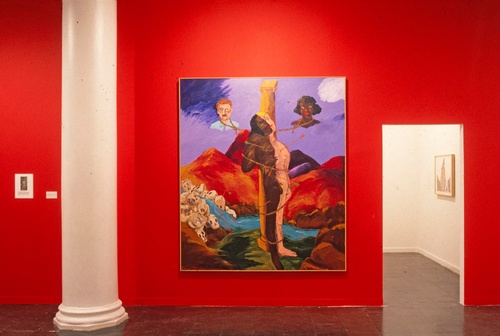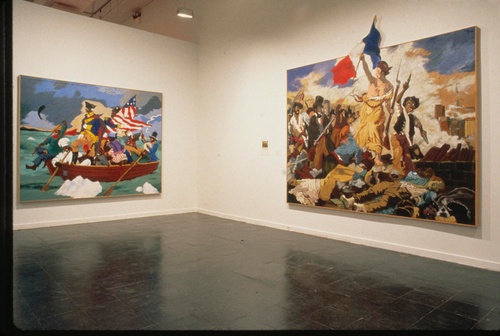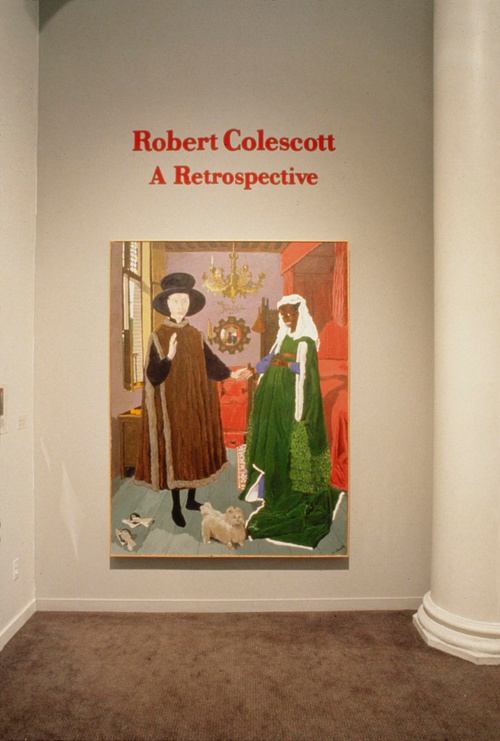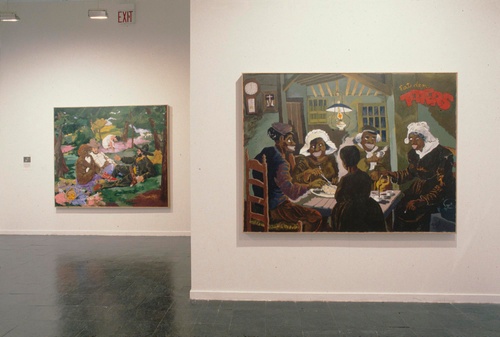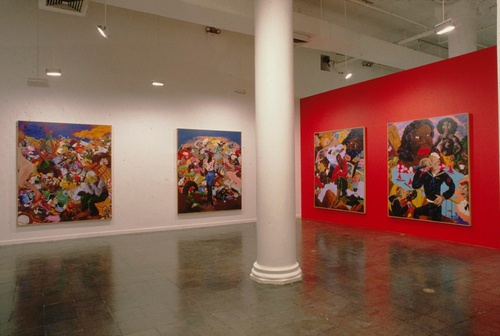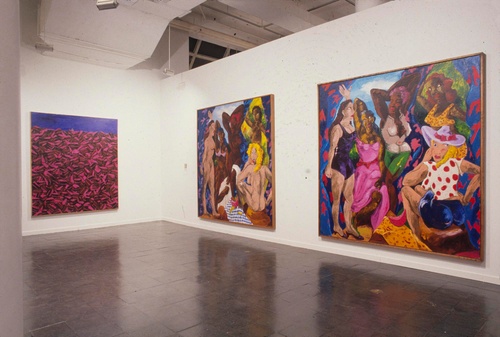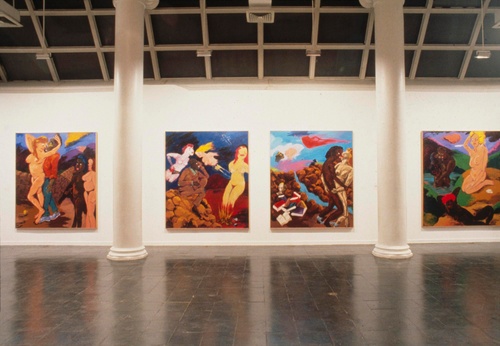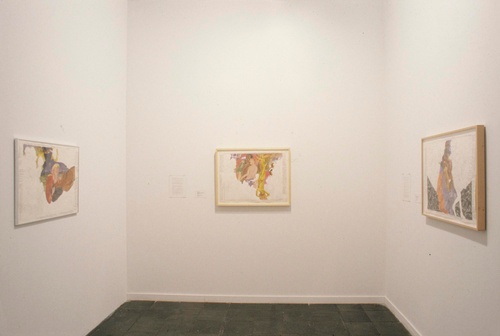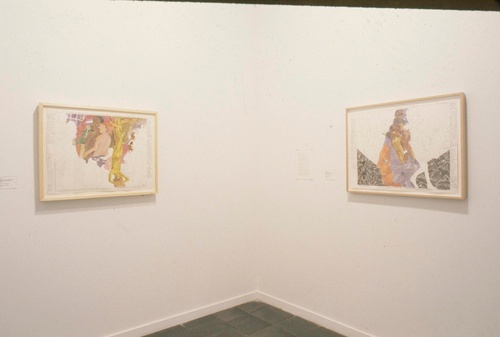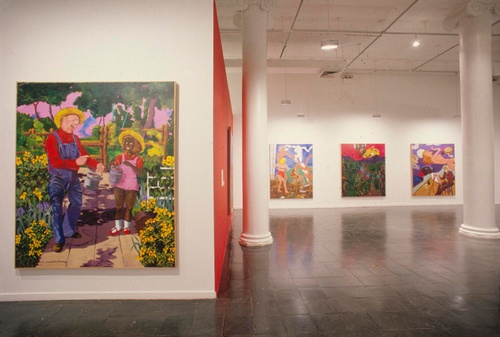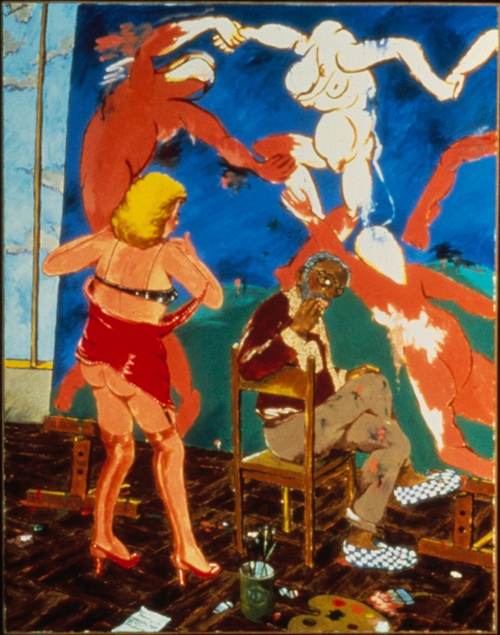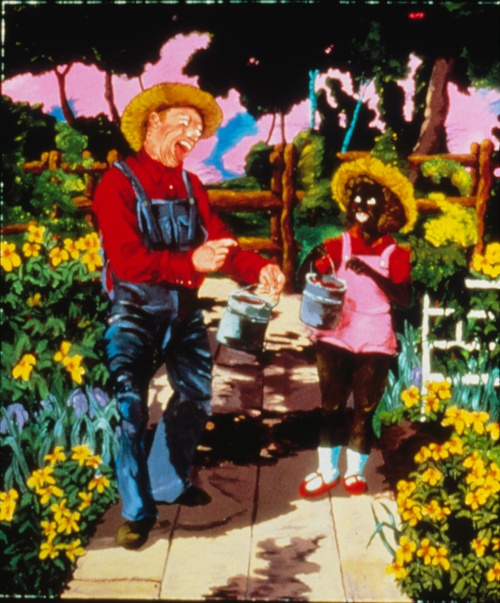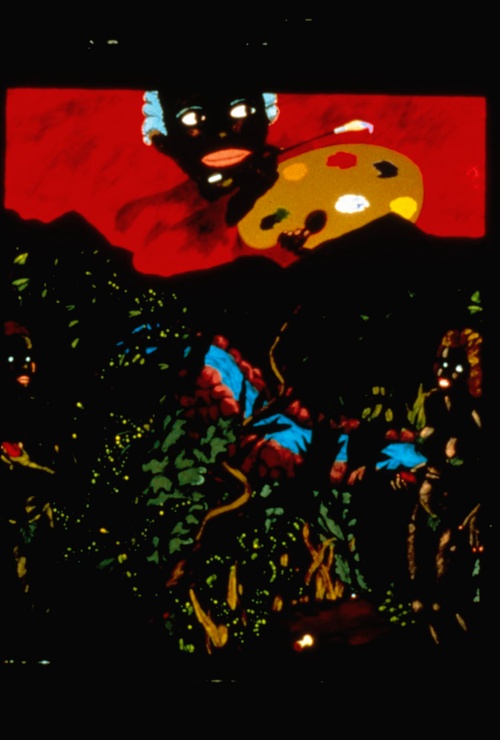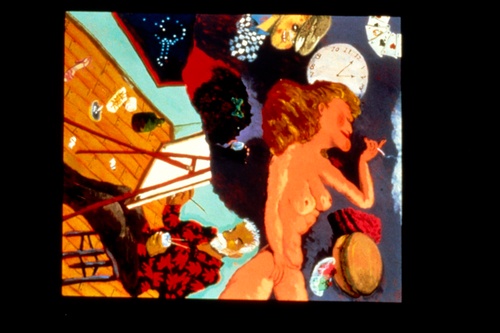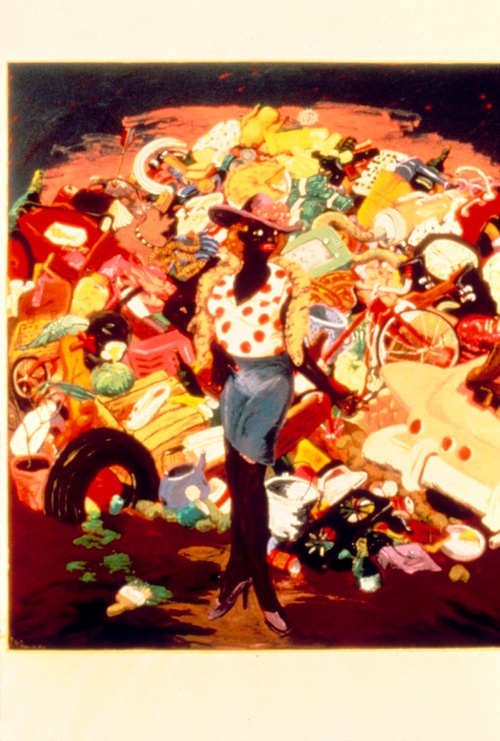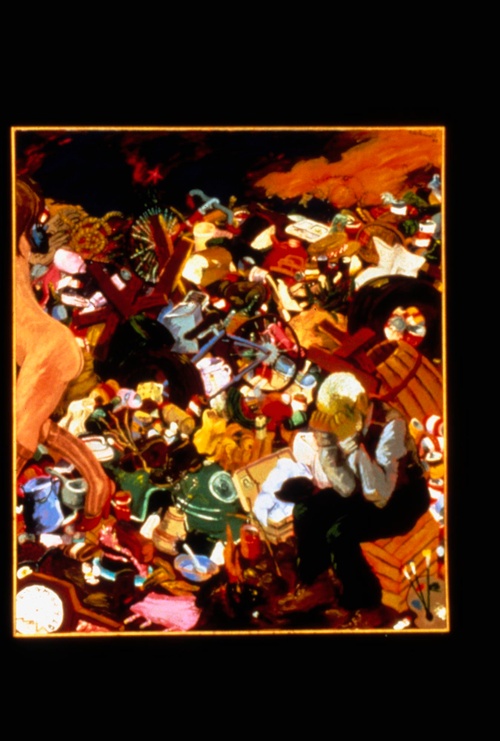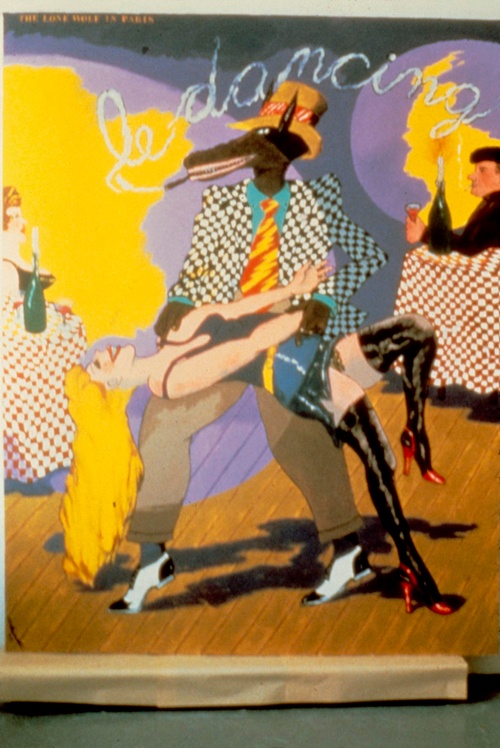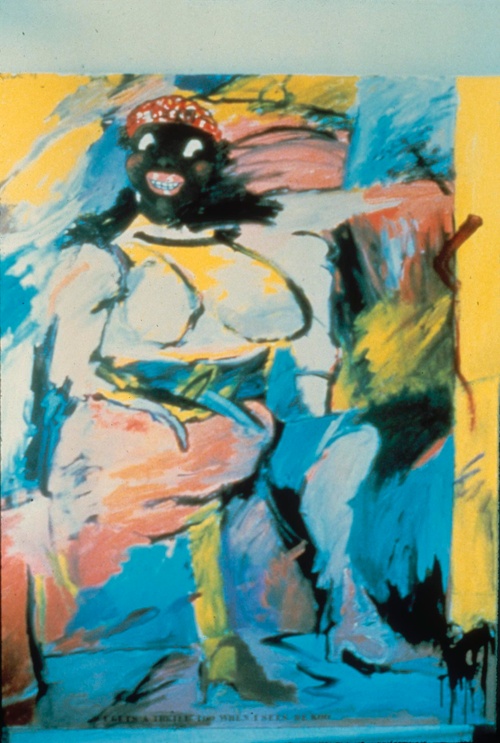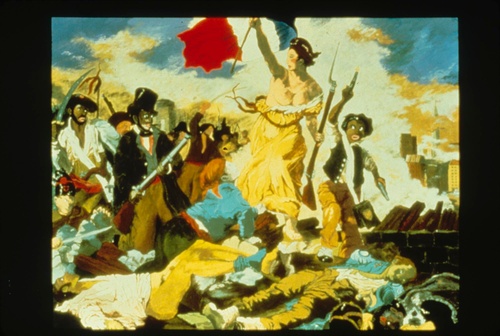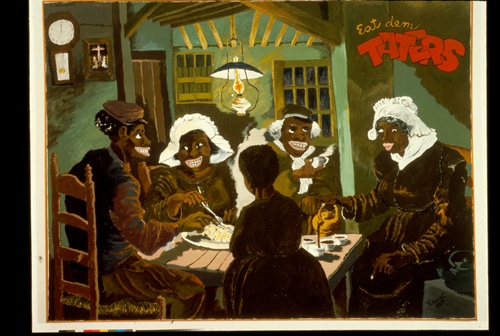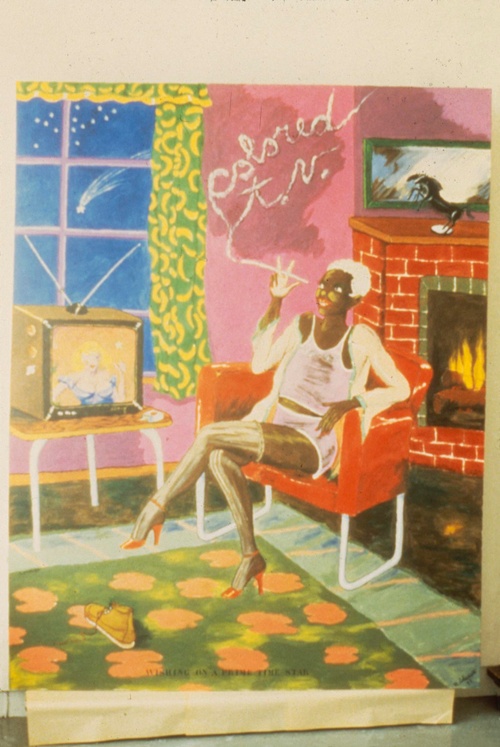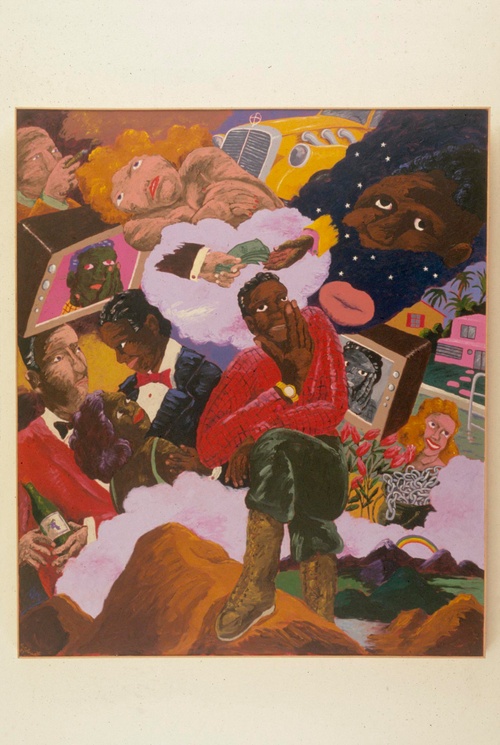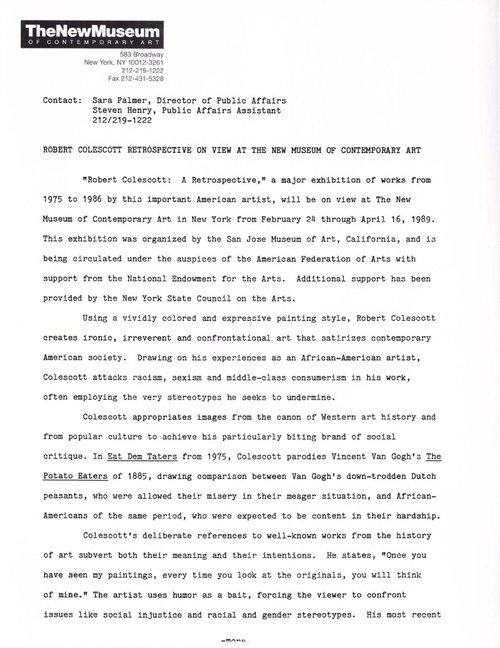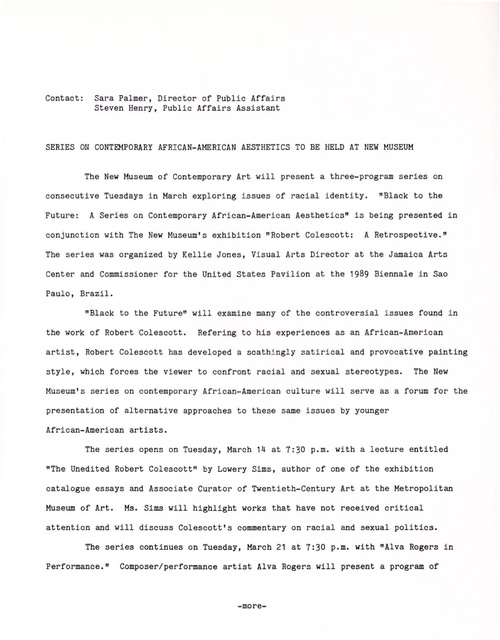Robert Colescott: A Retrospective
Robert Colescott: A Retrospective
“Robert Colescott: A Retrospective,” was a major exhibition of works from 1975 to 1986 by the important American artist. It was on view at the New Museum from February 24 through April 16, 1989. The exhibition was organized by the San Jose Museum of Art, California, and was being circulated under the auspices of the American Federation of Arts with support from the National Endowment for the Arts. Additional support was provided by the New York State Council on the Arts.
Robert Colescott created ironic, irreverent and confrontational art - in a vivdly colored and expressive painting style - that satirized contemporary American society. Colescott drew on his experiences as an African-American artist to attack racism, sexism and middle-class consumerism in his work, often employing the very stereotypes he sought to undermine.1
Wrote curator Lowery Stokes Sims in advance of the exhibition: “Colescott’s work is not the consumerist romance of the Pop artists. One of his techniques is to appropriate images from the masterpieces of art history and from advertising, charging the original characters or replacing them with surrogates in such a way as to ask the question "what if …?” What if you switched the sex of the figures in classical image Laocoön? What if you made the Flemish bride in Jan van Eyck’s Arnolfini wedding portrait black? What would our reaction be and what kind of world would we have if these were the normal situations? … Colescott’s increasing inclination toward allegorical formulations occurs at a time when his influence, like that of other “old-time” figurationists such as Leon Golub and Peter Dean, is beginning to be felt in the art world. At a moment when “appropriation” is the critical catchword, Colescott is rapidly moving to personally distilled and universal statements about the role of individuals in history and the progression of cultural achievements.“2
